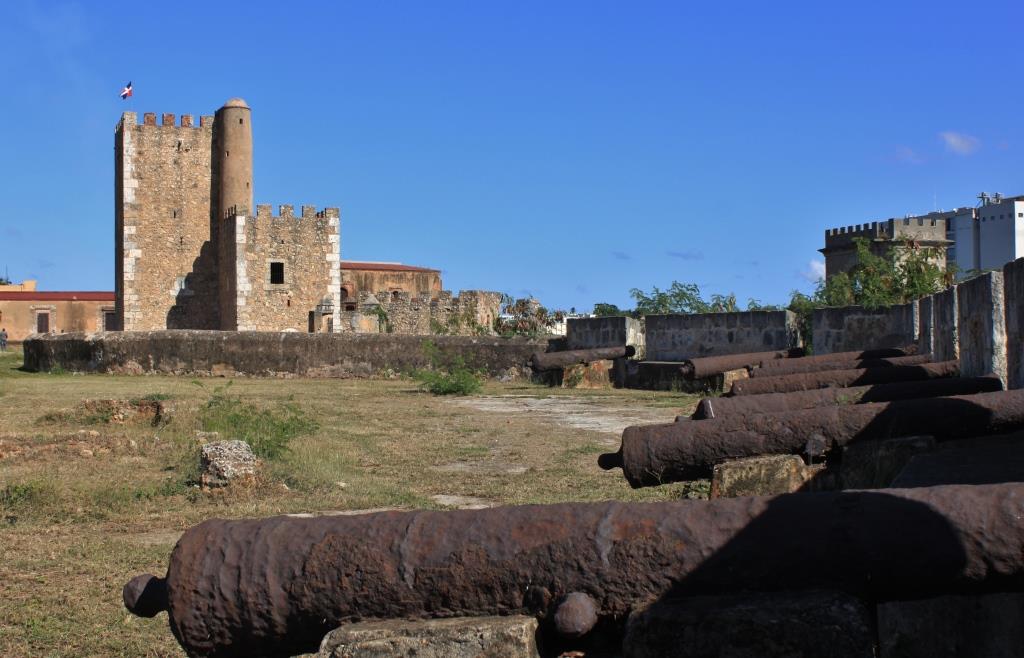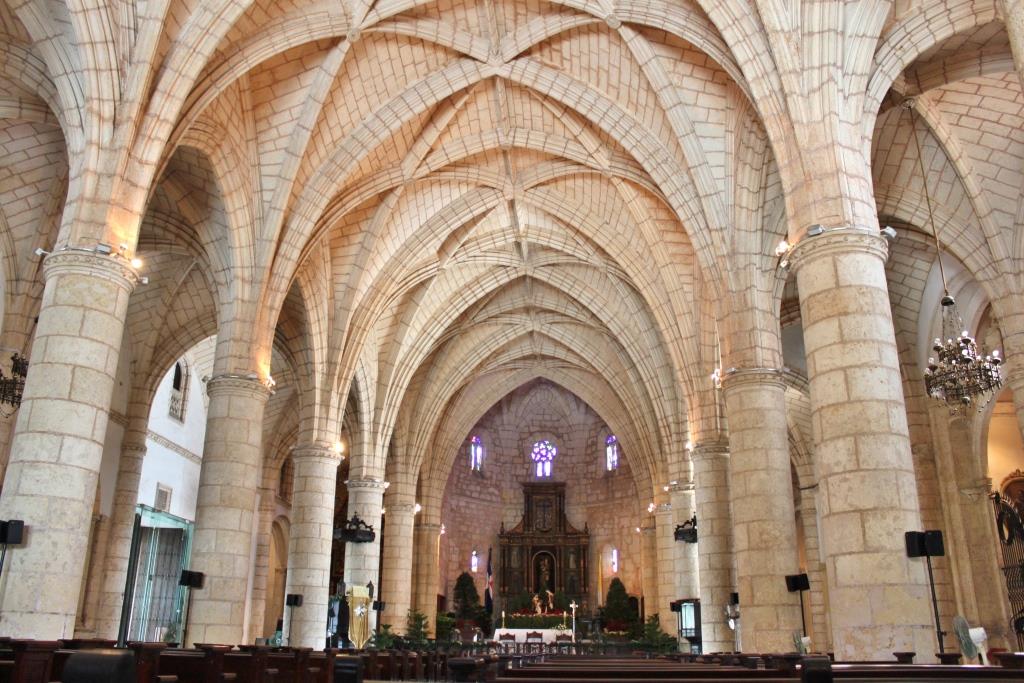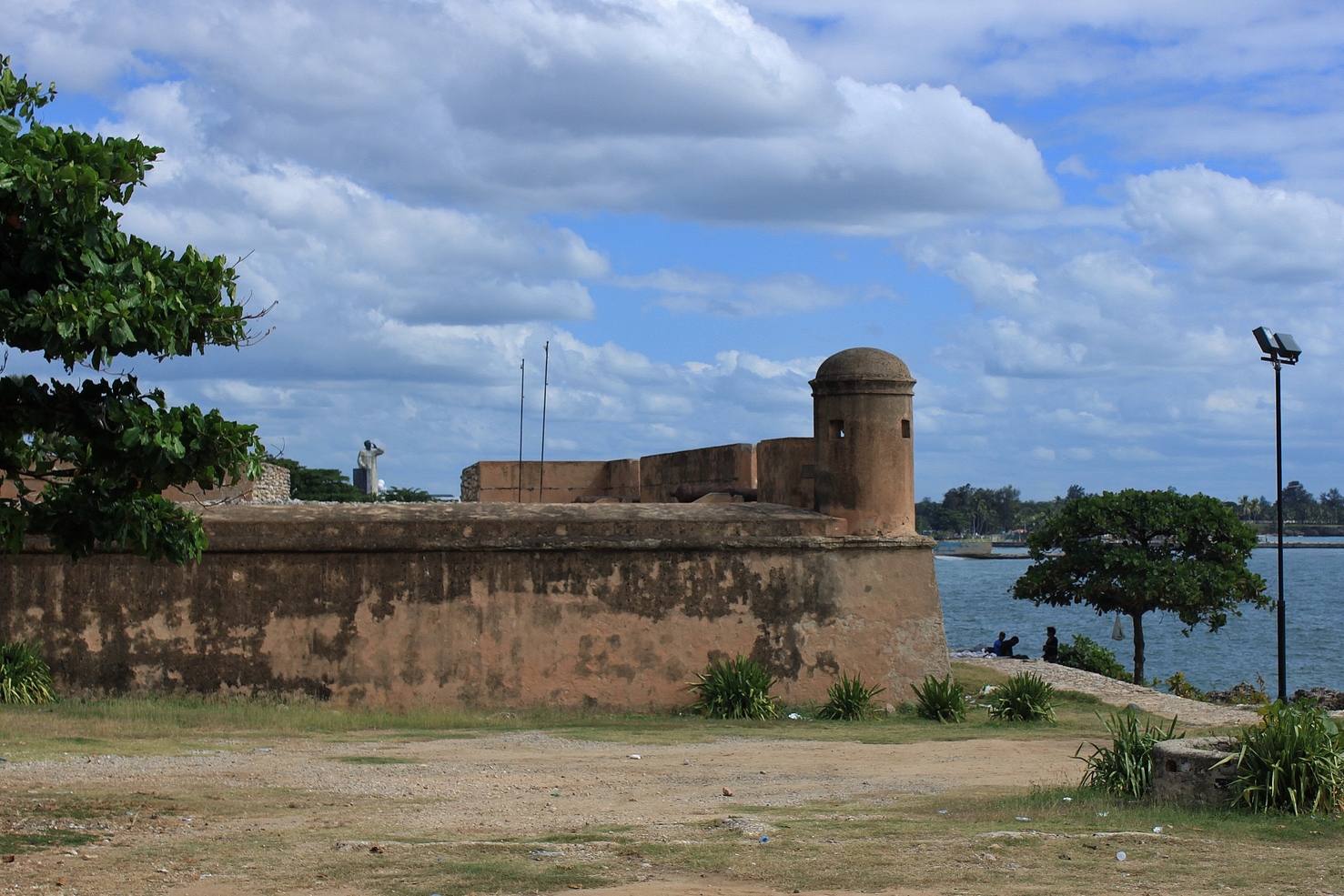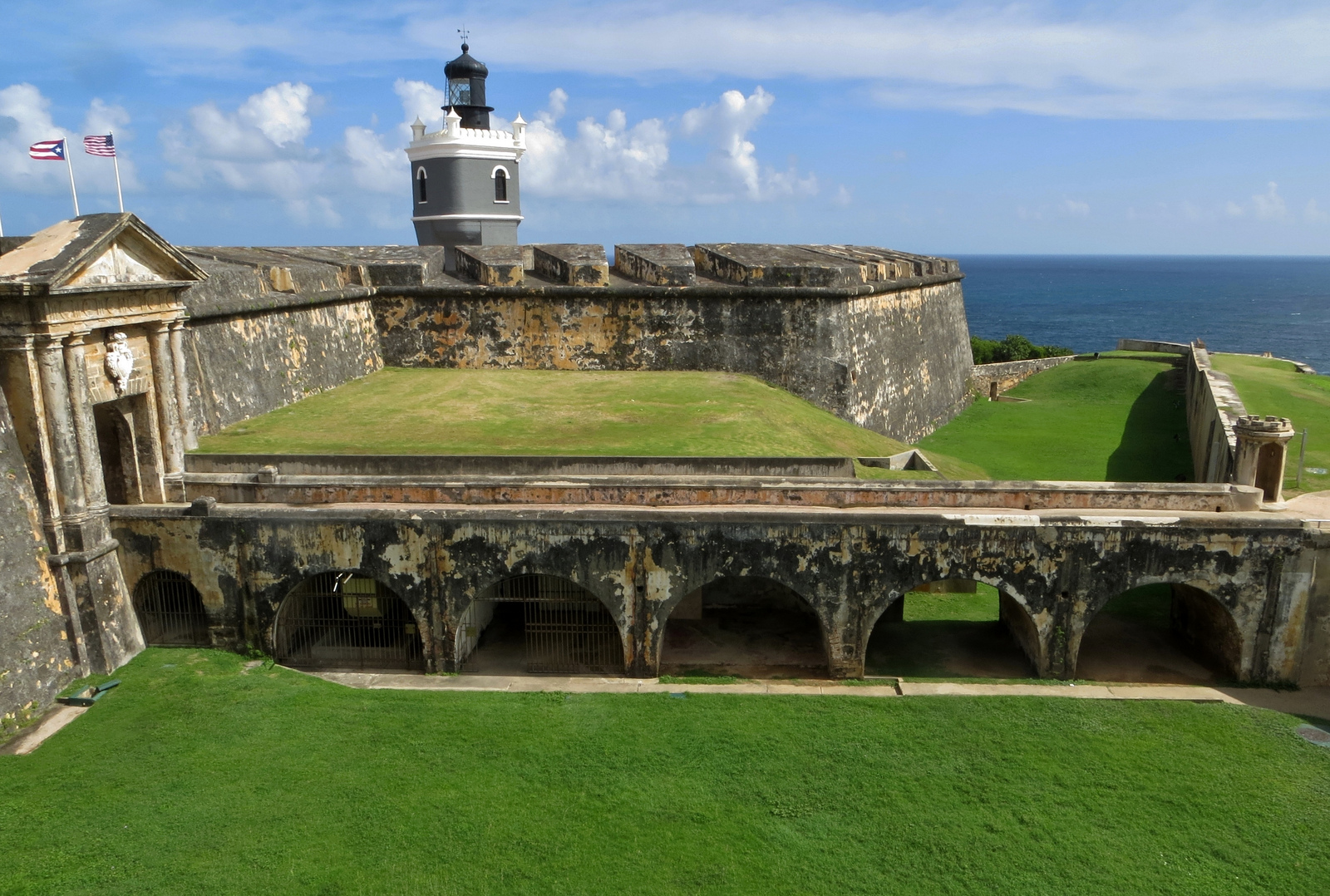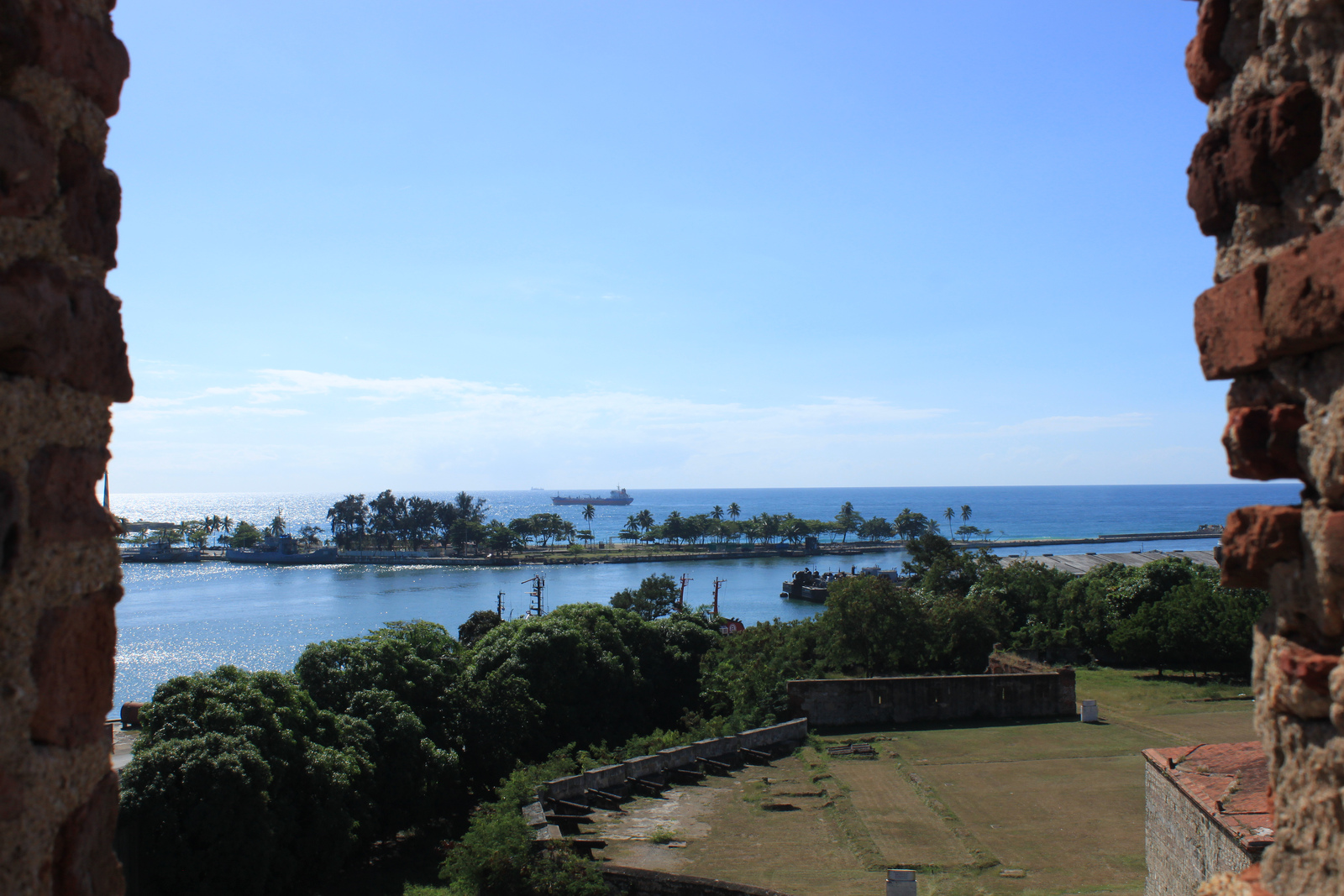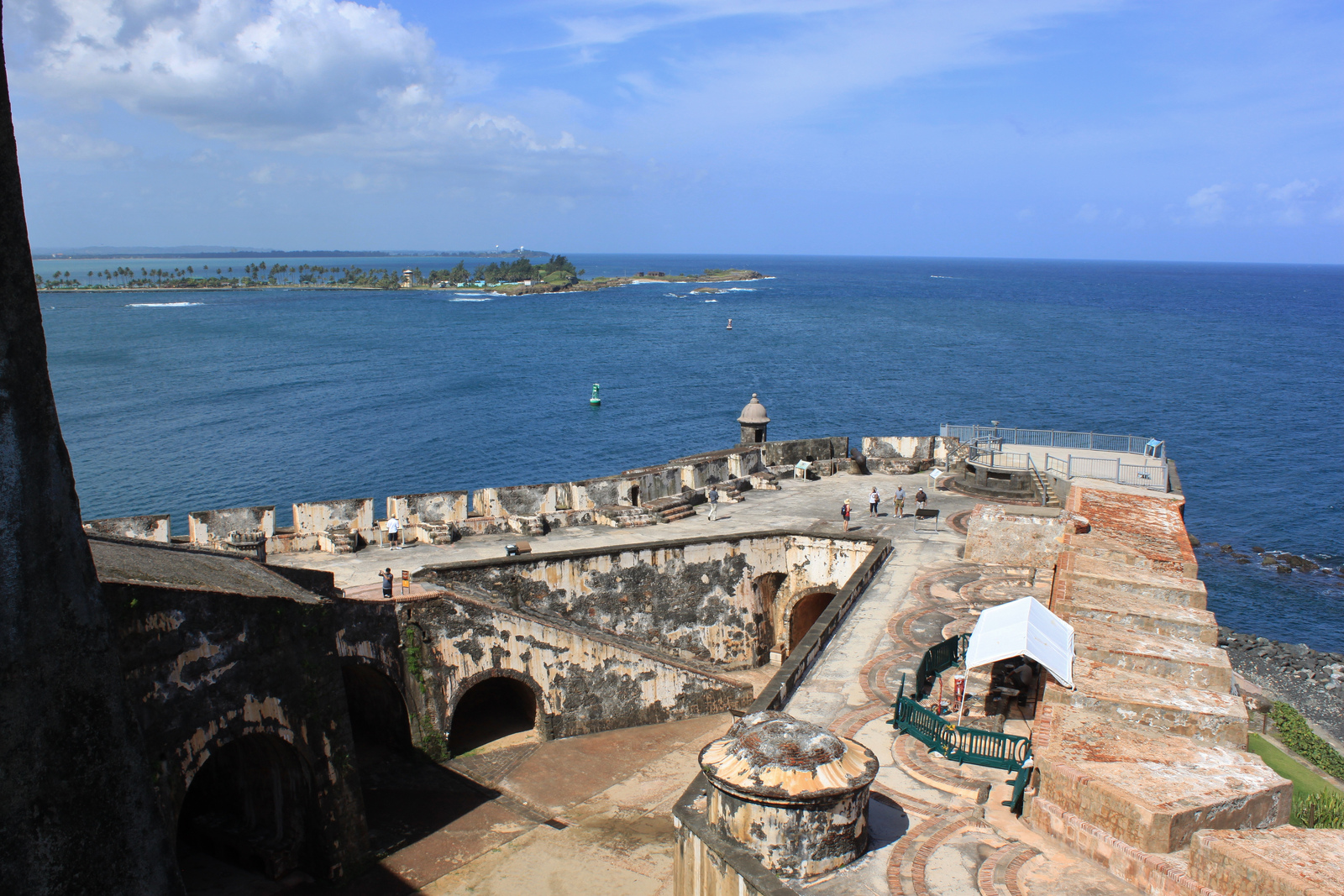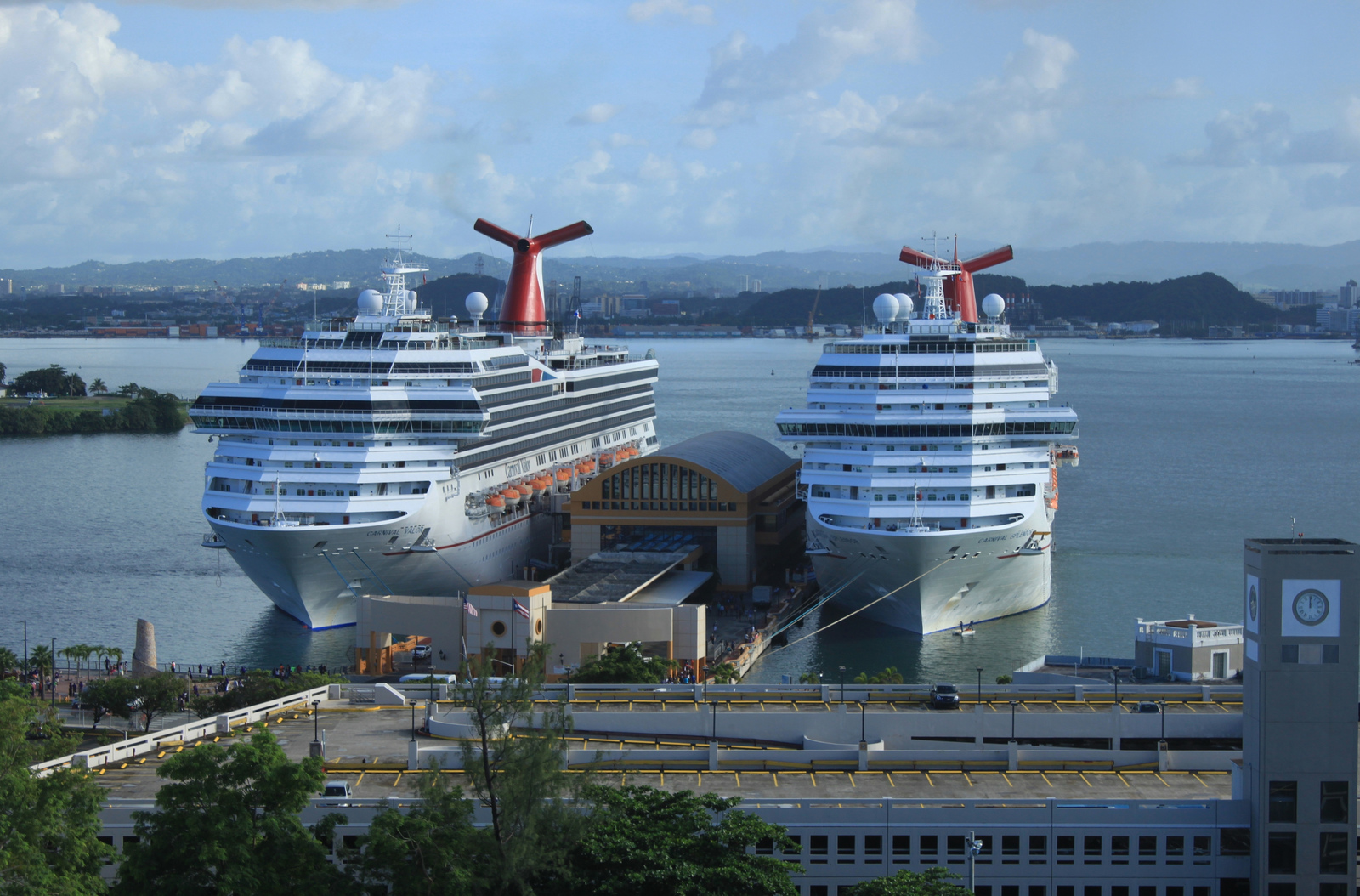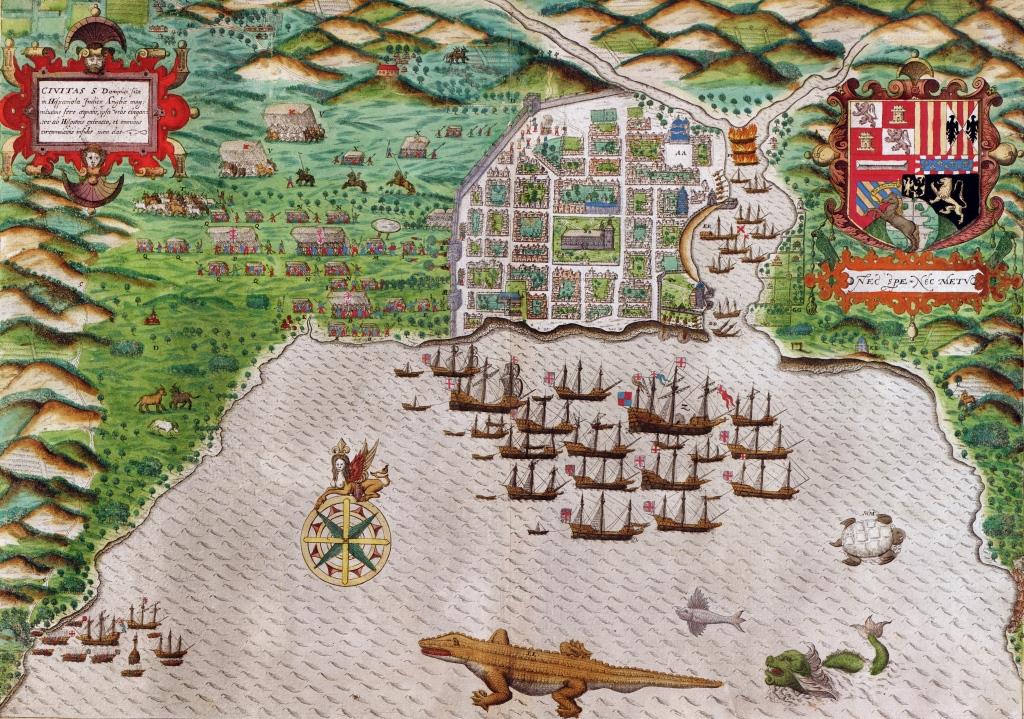
Santo Domingo, sacked by Francis Drake in 1586. Note the small harbor protecting only a handful of ships.
We believe that we live in an age of terrorism. But terror is as old as humankind. Just ask the unsuspecting population of Santo Domingo on the island of Hispaniola which on January 1, 1586, woke up to Francis Drake (c. 1540 – 1596) and his marauding mercenaries ransacking their city. Santo Domingo, founded in 1496, is the oldest colonial city in the New World and at that time as the seat of a real audiencia still was a Spanish administrative center for the Caribbean. But it long had lost the political and strategic centrality it enjoyed during the years of the Conquest, and its pivotal role in the Transatlantic trade had been passed on to nearby San Juan, Puerto Rico, as I have discussed in a different post. When Francis Drake arrived, Santo Domingo was well past its prime.
Drake’s men took the city by surprise, both by shelling the Fortaleza Ozama and by entering the city through the poorly defended gates on the land side. The pirates plundered and vandalized the city, burned down parts of it, and started to destroy stone buildings and monasteries to extort a ransom. He set up his headquarters in the cathedral where he looted the altars, destroyed all religious art, plundered the tombs, taking anything that was of value, and quite literally defecating on all things Catholic. Finally, a ransom of 25,000 ducats was negotiated–an extraordinary sum that only could be amassed by forcing citizens to surrender gold and jewels. At the nearby Casa del Cordón Drake installed a scale to weigh the exact amount of gold and jewels that were turned in by citizens. Drake and his men left again a month later, turning their attention to Cartagena which was sacked and plundered in a similar fashion.
Drake left behind not just a city that was a smoldering ruin, he also left behind a humiliated and traumatized city. To be sure, most of the churches and houses were restored, but the Spanish did not update the defense installations as they did in San Juan, Cartagena and other strategic points in the Caribbean. Simply put, the Spanish stopped investing into Santo Domingo. Very little of importance happened here after 1586, and the Spanish colonial Baroque architecture and culture of the 17th and 18th centuries which flourished in Mexico and South America completely bypassed Santo Domingo.
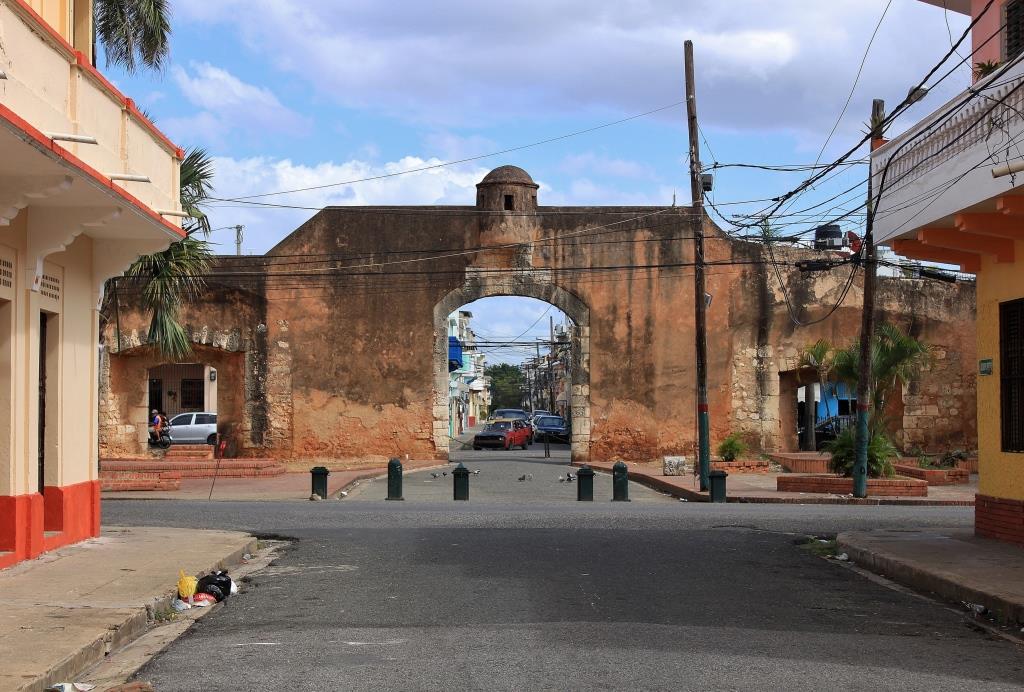
The Puerta de la Misericordia, built in 1543 and expanded in 1568, could not stop Drake’s attack on land.
In a modern definition, terrorism involves non-state actors fighting enemy states, their representatives, institutions, and populations in asymmetrical warfare. In that sense, Robespierre‘s Reign of Terror in post-revolutionary France in 1793-94 does not qualify: this is just a case of a despot savagely abusing his own people. We have seen many since: from Stalin and Hitler to native sons “El Jefe” Trujillo and “Papa Doc” Duvalier who more recently traumatized the two nations that now share the island of Hispaniola.
Obviously, we have to see Francis Drake’s savage pillaging in the geopolitical context of the time: England challenging the Habsburg hegemony (the Habsburgs ruled Spain, Austria, and the Low Lands and controlled the Empire), supporting the Dutch in their wars of liberation against the Spanish, taking an active role in fighting Catholicism, and striving to become a maritime and colonial power in its own right.
In fact, Francis Drake, Sir Francis Drake if you are British, was sailing to the West Indies in something of an official mission. His acts of piracy in the Caribbean clearly were part of an English strategy to weaken the Spanish control over the Caribbean and the Transatlantic trade. But his fleet of 30 ships was financed by merchants who clearly had an interest in developing a trade network in the Caribbean, and his mission was not to take land and plant the English flag. His mission was to plunder and destroy, to take ransom, in short to inflict terror. Drake may have been the original of the “Pirates of the Caribbean.” He ushered in a century of piracy that left the Caribbean an unsafe, violence-filled space.
Like most explorers and navigators of the time, Drake also was a privateer, entrepreneur and free agent who worked for himself first and foremost. This agency is also an attribute of modern terrorists. Like many terrorists today, Drake had the implicit support by a state actor, the English crown, and had the financial backing of his own commercial network. Most importantly, the trauma of this humiliation he inflicted on Santo Domingo more than four centuries ago lives on today.* That is the very definition of terror.
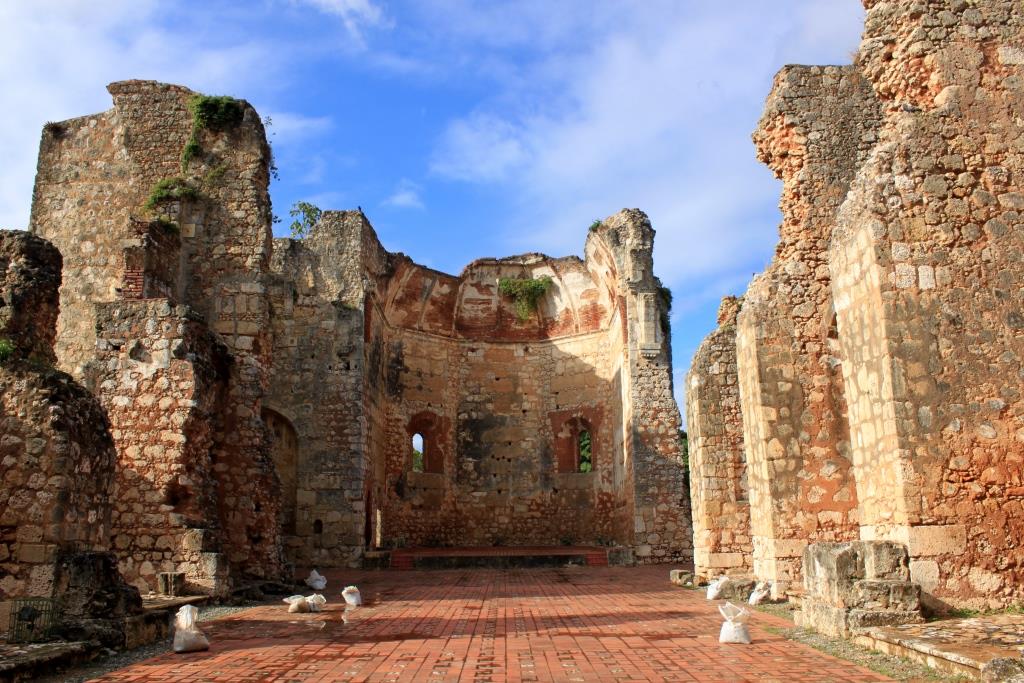
Iglesia de San Francisco, constructed 1544-1556. The Franciscan convent in Santo Domingo was mostly destroyed by Drake, then partly restored, damaged again in earthquakes in 1673 and 1751, abandoned in 1795.
* Note added 5/22/14: Gabriel García Márquez in his novel Chronicle of a Death Foretold (NY: Vintage Books, 1983, p. 98) describes the Palace of Justice in Riohacha on Colombia’s Caribbean coast with this apparently random phrase: “decrepit colonial building that had been Sir Francis Drake’s headquarters for two days.” This is the only overt historical reference in the book and indicates how Drake’s terror lives on in the collective memory in the areas he affected.
